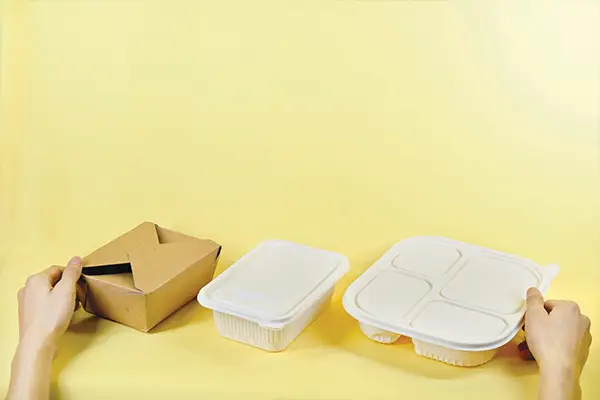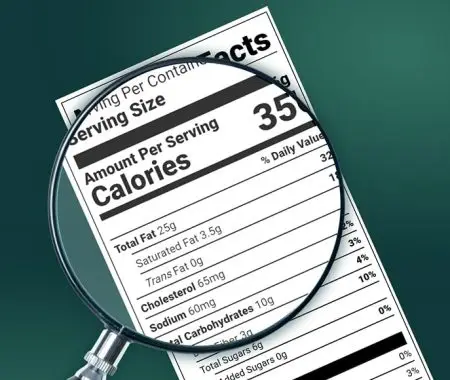In the vast world of food labeling, there’s one term that stands out for its significance: the “principal display panel.” As you navigate the aisles of your favorite grocery store, you’re constantly interacting with this crucial component, perhaps without even realizing it.
But what exactly is the principal display panel, and why is it so vital for both consumers and manufacturers? This article will outline the intricacies of food labeling and shed light on this essential term.
Principal Display Panel (PDP) TL, DR:
- Key Component: The PDP is the product’s face on food packaging, crucial for consumer transparency.
- Main Features:
- Product Identity: Displays the product’s standard or common name.
- Net Content Quantity: Indicates the amount of product inside.
- Regulations: The PDP is a regulated space with mandatory elements by the Food and Drug Administration (FDA) to ensure clarity during purchasing.
- Size & Placement: Varies based on packaging:
- Rectangular Packaging: Typically the front-facing side.
- Cylindrical Containers: Top 30% of the container’s height.
- Unique Shapes: Positioned for optimal consumer visibility.
- General Guidelines:
- Legibility: Clear, contrasting text.
- Font Size: Proportional to the panel size.
- Language: Primarily in English; additional languages allowed.
- Placement: Unobscured, easily accessible information.
- Importance: Adherence fosters consumer trust and ensures manufacturer compliance.
What is the Principal Display Panel?
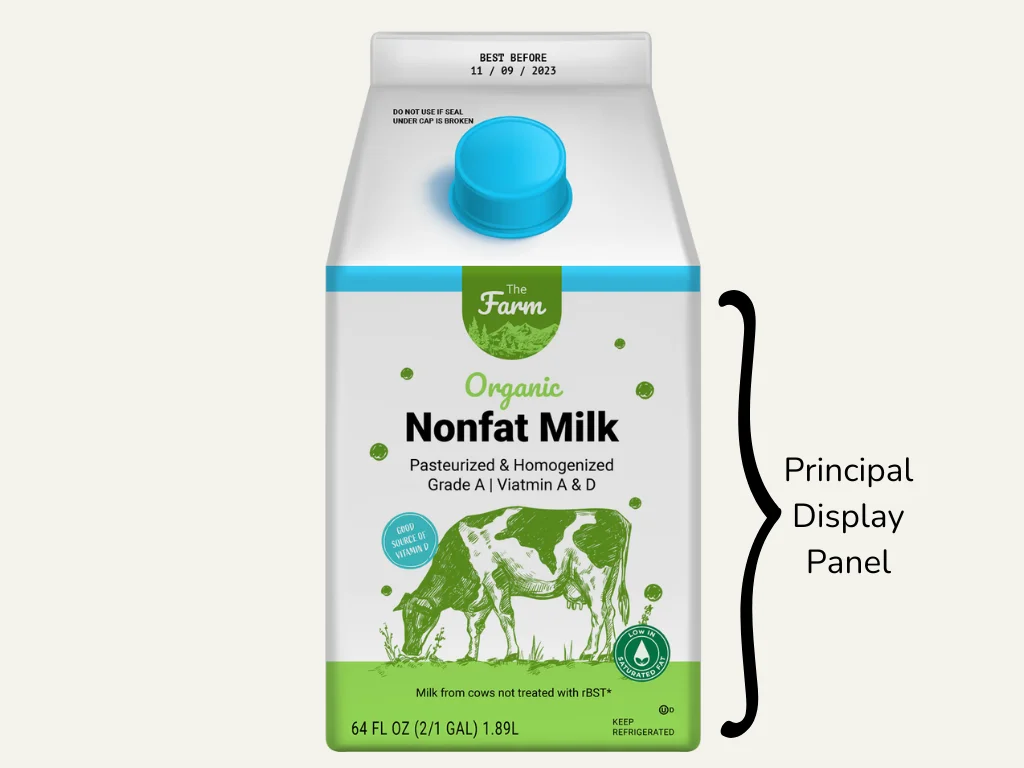
The principal display panel, often abbreviated as PDP, is the portion of the packaging that’s most prominently displayed to consumers during the purchasing process. It’s essentially the face of the product, offering a snapshot of what’s inside. Two key elements grace the PDP: the product’s identity and its net content quantity.
The product identity provides an honest and standard name for the item, ensuring transparency. Meanwhile, the net quantity of contents gives a clear indication of how much of the product is in the package, allowing consumers to make informed decisions. In essence, the principal display panel serves as a transparent bridge between the product and the consumer, ensuring clarity and trust at the point of purchase.
See How FoodLabelMaker Can Help You
What Needs to Be on The Principal Display Panel?
The principal display panel is more than just a branding space; it’s a regulated area that must convey specific, essential information to the consumer. While the design and branding elements can vary, there are mandatory elements that every principal display panel must feature.
Statement of Identity
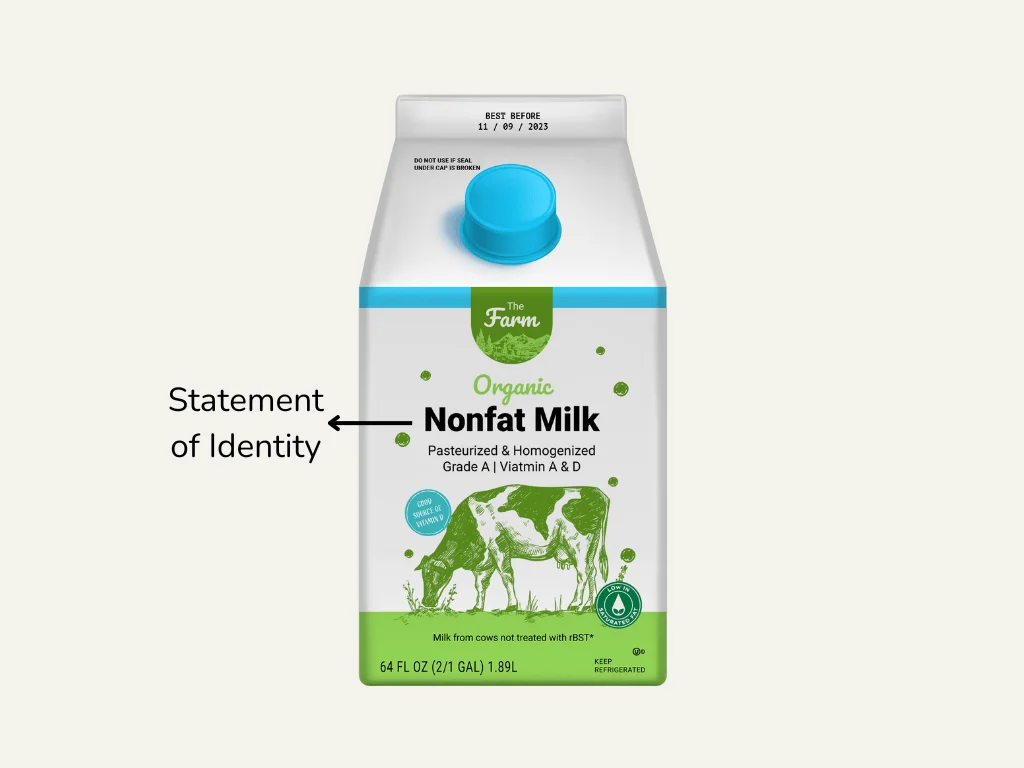
The Statement of Identity, often referred to as the product’s “identity,” is the common or usual name of the product. The Statement of Identity could also be the legal name of the food or a description of the food if the other two are not appropriate. It essentially tells the consumer what the product is.
For instance, if you’re selling apple juice, the statement of identity would be “Apple Juice.” This name should be clear, truthful, and prominently placed so that consumers can easily identify the product they’re considering.
Net Quantity of Contents
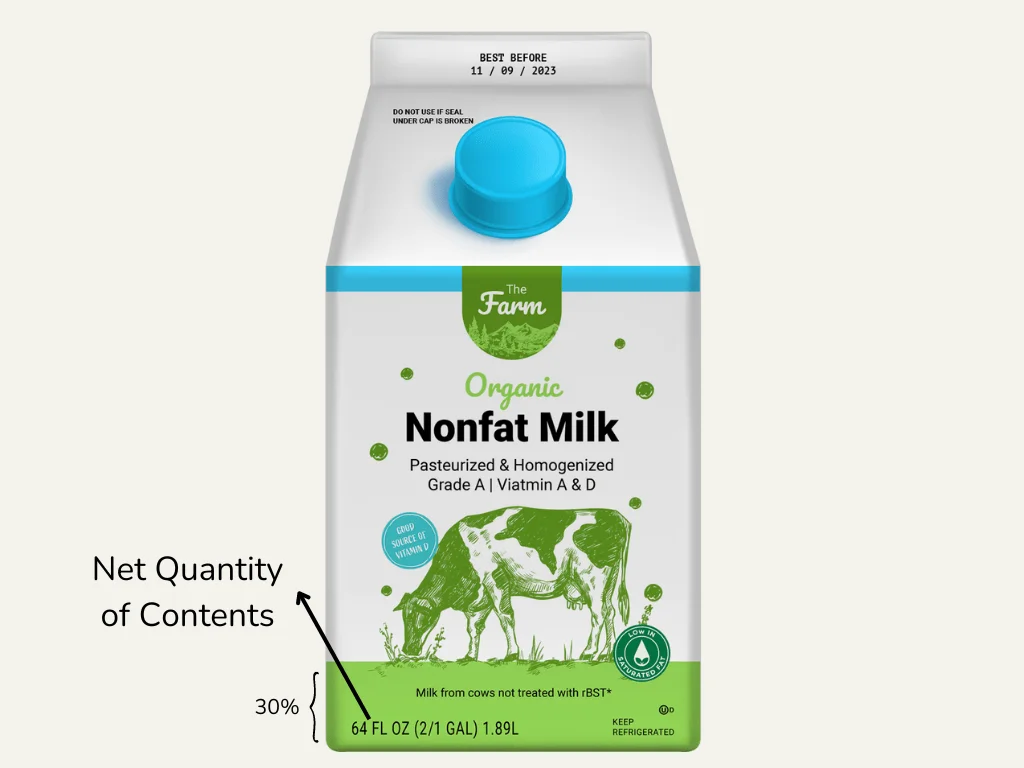
This refers to the amount of the product in the container or package. It’s a declaration of the actual contents’ weight, measure, or numerical count. This information should be displayed in the bottom 30 % of the PDP and be stated in both metric (grams, liters) and imperial (ounces, pounds) units. The purpose is to give consumers a clear understanding of how much product they’re getting, allowing for informed comparisons and choices.
For a detailed breakdown of label requirements and best practices, consider referencing resources like this one which provides comprehensive insights into food labeling.
Principal Display Panel Size Requirement
The size of the principal display panel is determined by the shape and size of the packaging. Different-shaped packaging has its own set of requirements to ensure that the essential information is easily visible and readable.
Rectangular Packaging
For packages that have a rectangular shape, like a cereal box, the principal display panel’s size is typically based on the product’s front-facing side. This is the area that consumers first see when the product is placed on shelves.
Cylindrical or Nearly Cylindrical Containers
Think of products like soda cans or yogurt tubs. For these, the principal display panel is usually the top 30% of the container’s height, wrapping around the circumference. This ensures that as the product is rotated, the essential information remains visible.
Other Shapes
For uniquely shaped packaging, the principal display panel should be on a part of the package that’s most likely to be displayed or presented to the consumer. The goal is always to ensure that the essential information is easily accessible and visible on display.
Other General Requirements
Beyond the shape-specific requirements, there are other general guidelines to keep in mind:
- Legibility: All text on the principal display panel should be clear, easy to read, and in a contrasting color to the background.
- Font Size: The statement of identity and the net quantity of contents should be in a font size proportional to the size of the panel, ensuring visibility.
- Language: All mandatory information should be in English, though additional languages can be included.
- Placement: Mandatory information should not be obscured by other labeling or graphics. It should be placed in a way that it’s not hidden or hard to find.
The principal display panel is a cornerstone of food labeling, acting as the primary communicator between the product and the consumer. It’s not just about branding or aesthetics; it’s a regulated space that conveys essential information, ensuring transparency, trust, and informed decision-making.
For manufacturers, adhering to the guidelines set out by the FDA ensures compliance and fosters trust with their audience. In the ever-evolving landscape of food products, the principal display panel remains a constant beacon of clarity and trustworthiness, bridging the gap between products and the people who consume them.

